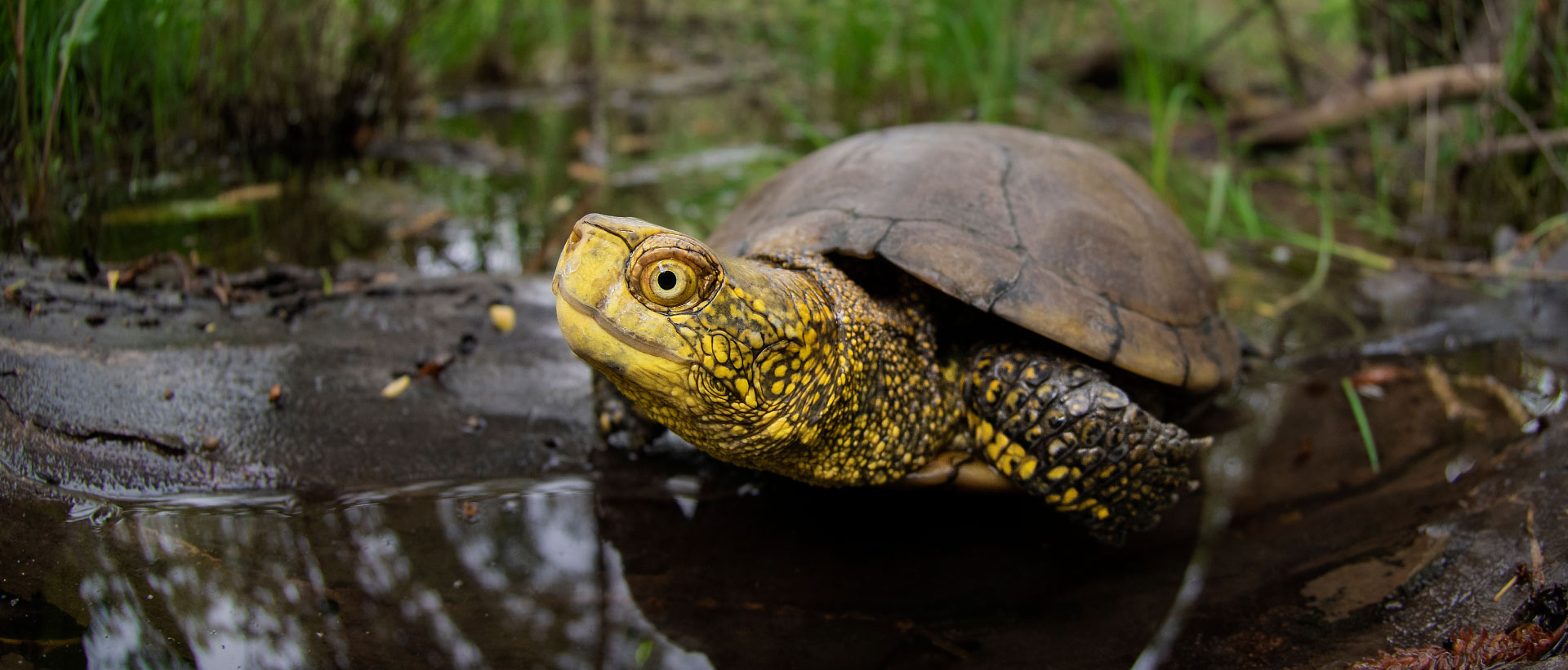
At European level, the import of Trachemys scripta, including hybrids, is prohibited. In order to deal more effectively and organically with the issue of invasive alien species (IAS), the European Union issued Regulation No. 1143/2014, which lays down rules to prevent, minimize and mitigate the negative effects on biodiversity caused by the introduction and spread, whether deliberate or accidental, of IAS species within the Union, as well as to minimize and mitigate the impact these species may have on human health or the economy. Trachemys scripta has been listed by the IUCN as one of the 100 invasive alien species with the greatest impact on habitats and native species, so this American pond turtle has been placed on the IAS list.
In Italy, all invasive alien species, Trachemys scripta included, can no longer be: introduced or transited in the national territory, held, bred (not even in confinement), sold or placed on the market, used or given for free or exchanged, placed in a condition to reproduce (even in confinement), released in the environment. Legislative Decree 230/2017, in Article 26, introduces the obligation to report the possession of individuals of invasive exotic species included in the European or national list.
The Ministerial Decree on the Environment of 18 April 1996 includes Chelydra serpentina, also known as the snapping tortoise, among the dangerous animals whose keeping and sale is prohibited because they are considered dangerous to public health and safety; when out of water they become very aggressive.
In Italy, all invasive alien species, Trachemys scripta included, can no longer be: introduced or transited in the national territory, held, bred (not even in confinement), sold or placed on the market, used or given for free or exchanged, placed in a condition to reproduce (even in confinement), released in the environment. Legislative Decree 230/2017, in Article 26, introduces the obligation to report the possession of individuals of invasive exotic species included in the European or national list.
The Ministerial Decree on the Environment of 18 April 1996 includes Chelydra serpentina, also known as the snapping tortoise, among the dangerous animals whose keeping and sale is prohibited because they are considered dangerous to public health and safety; when out of water they become very aggressive.
Owners who already possessed yellow belly and red-eared Slider (T. scripta and T. elegans) before the species was listed (14/2/2018) may continue to keep the individuals as pets, keeping them in such a way that they cannot escape or be released into the wild and preventing them from reproducing.
In any case, they must report the possession of the animals in the manner provided for at www.mase.gov.it/pagina/specie-esotiche-invasive.
Alternatively, by the same date they may entrust the individuals in their possession to authorized public or private facilities identified by the Regions and the Autonomous Provinces of Trento and Bolzano.
Step by step instruction: scarica il file pdf
In any case, they must report the possession of the animals in the manner provided for at www.mase.gov.it/pagina/specie-esotiche-invasive.
Alternatively, by the same date they may entrust the individuals in their possession to authorized public or private facilities identified by the Regions and the Autonomous Provinces of Trento and Bolzano.
Step by step instruction: scarica il file pdf
| Regione | Nome | Gestione | Informazioni |
| Emilia Romagna | Centro a Neviano degli Arduini | ENPA Parma | ENPA sezione provinciale di Parma telefono 0521 1716793 (orari giovedì 17-19 e sabato 10-13) e Associazione Rescue Dogs di Noceto telefono 388 6443131 e rescue.dogs@libero.it |
| Emilia Romagna | Centro a Mirandola di Riccò Federico | Azienda agricola di Riccò Federico | Riccò Federico: info@aziendaagricolaricco.it, telefono 334 9959604 (orari 9 – 12 e 15 – 19 dal lunedì al sabato) https://www.aziendaagricolaricco.it |
| Emilia Romagna | Centro di Recupero Tartarughe Acquatiche Alloctone Pianura Cesenate | Tarta Club Italia | Mirko Giorgioni (vice-presidente Tarta Club Italia) centrorecupero@tartaclubitalia.it / info@tartaclubitalia.it sito: www.tartaclubitalia.it |
| FVG | Centro Regionale detenzione anmali esotici | Regione FVG | dal lunedì al sabato dalle 15.30 alle 19.00 Baradel Damiano ai n. 348 4056523 o 338 4786312 o 0481 711574 https://www.regione.fvg.it |
| Lazio | LabTer del Parco Riviera di Ulisse | Parco Riviera di Ulisse | Ad oggi esaurito, in attesa di nuovi spazi |
| Liguria | Centro Bormida | Regione Liguria | Attivazione prevista 2023 |
| Marche | Parco del Conero | Parco del Conero | Parco Naturale del Conero info@parcodelconero.eu 071/9331161 |
| Marche | C.R.A.S Marche – Centro di Recupero Animali Selvatici Regionale | Provincia di Pesaro e Urbino | cras.pu@libero.it dal lunedì al venerdì dalle ore 7.00 alle 13.30 – telefono 3667786451 sabato dalle ore 7.00 alle ore 13.00 – telefono 3667786451 dal lunedì al sabato dalle ore 14.00 alle ore 6.00 – telefono 3667786450 festivi 24 ore su 24 – telefono 3667786450 |
| Piemonte | Centro Recupero Animali Selvatici di Bernezzo | Privato | Tel/Fax: 0171-82305 Cell: 328-5325296 E-mail: info@centrorecuperoselvatici.it https://www.centrorecuperoselvatici.it |
| Puglia | Centro autorizzato Calimera | Regione Puglia/Città di Calimera | ogni giorno dalle 9.30 alle 12.30 324 8898814 info@msns.it https://www.msns.it/centro-recupero-fauna-selvatica |
| Toscana | CRAS WWF “L’ASSIOLO” | WWF | 0585/241768 Cell. 360/234789 parcodidattico@virgilio.it; massacarrara@wwf.it centrodidatticoronchi@hotmail.it Sul web: http://centrodidatticowwfronchi.wordpress.com |
| Umbria | Centro Ittiogenico del Trasimeno di S.Arcangelo | Provincia di Perugia | 366 8309346 orario: 08:30 – 13:00 – da lunedì a venerdì https://www.regione.umbria.it/turismo-attivita-sportive/centri-ittiogenici |
| Veneto | Comune di Bovolone | Comune | Attivazione prevista nel 2024 |
(taken from the Plan for the control and management of exotic species of pond terrapin, edited by Vincenzo Ferri, as part of the Life Gestire project)
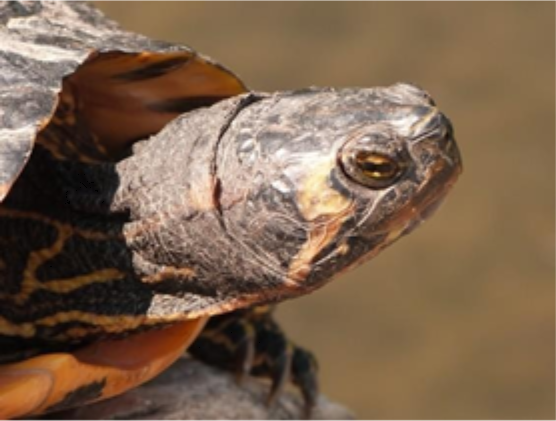
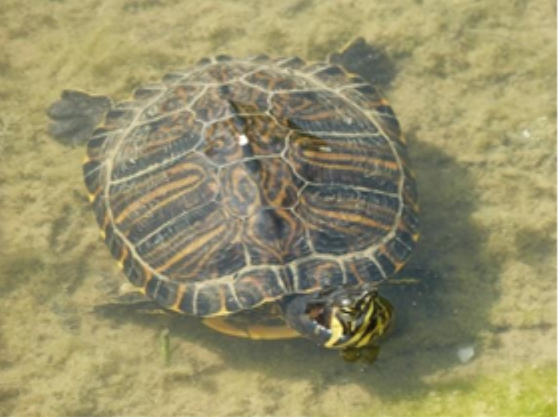
The American Yellow belly slider, Trachemys scripta scripta, (adult female on the left, 3-year-old female on the right)
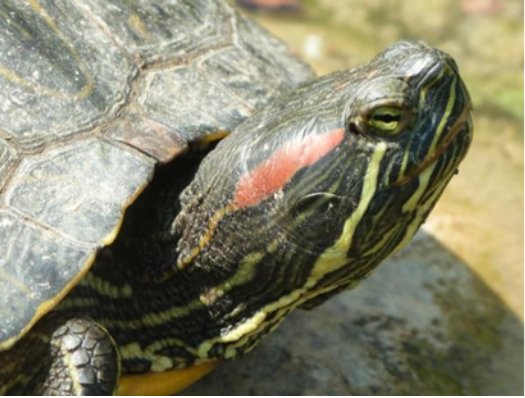
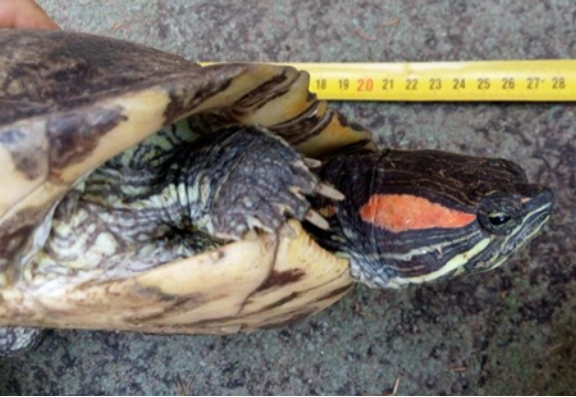
The American Red eared Slider, Trachemys scripta elegans, (adult female on the left, 8-year-old female on the right).
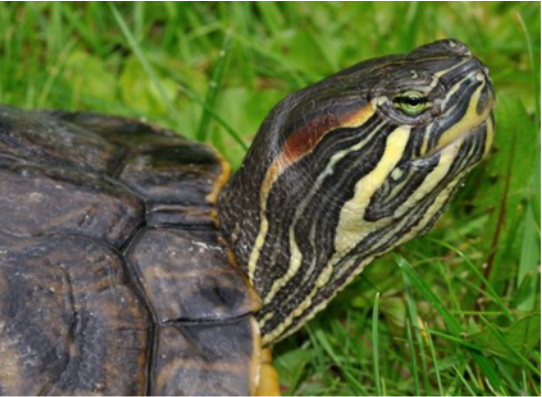
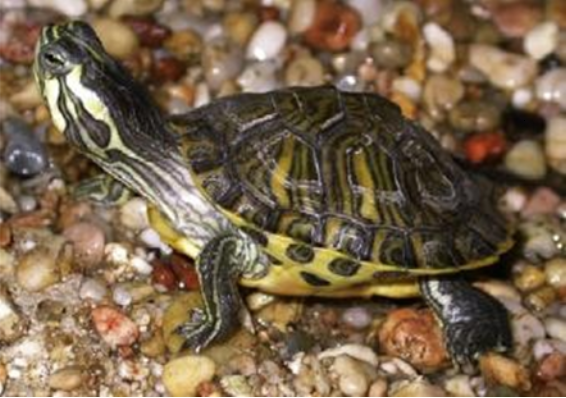
The Cumberland slider, Trachemys scripta troostii, (adult female on the left, 2-year-old female on the right).
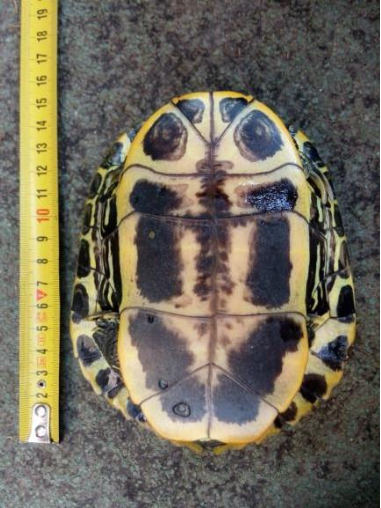
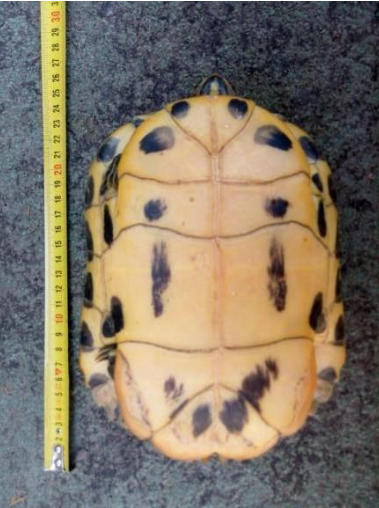
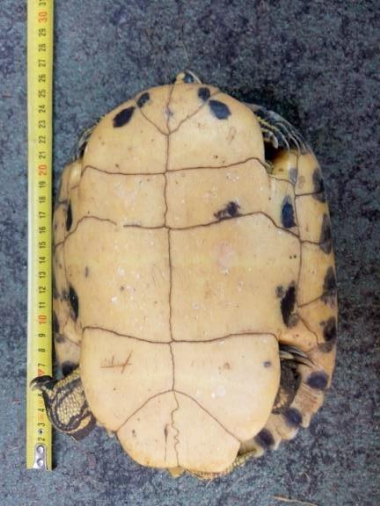
How to recognize the three subspecies: from left, plastron of Trachemys s. elegans, of T.s. troostii and Trachemys s. scripta.


The American Yellow belly slider, Trachemys scripta scripta, (adult female on the left, 3-year-old female on the right)


The American Red eared Slider, Trachemys scripta elegans, (adult female on the left, 8-year-old female on the right).


The Cumberland slider, Trachemys scripta troostii, (adult female on the left, 2-year-old female on the right).



How to recognize the three subspecies: from left, plastron of Trachemys s. elegans, of T.s. troostii and Trachemys s. scripta.
(taken from lifeasap.eu)
Private keeping of individual pond terrapin requires a continuous commitment over time because these animals can be very long-lived (they can live more than 35 years) and require constant care and adherence to precise hygiene rules.
The animals should be housed in special tanks appropriate to their size. The plastic tubs usually sold with the animal (mostly sold at a very young age, so-called baby size) are too small and unsuitable. After a short time they become insufficient and do not guarantee adequate hygienic conditions. The ideal environment for keeping animals at home is an aqua-terrarium of a size in relation to the size of the carapace: e.g. 6 times the carapace in length and 4 times the carapace in width per individual, with a deep water area where the animal can swim, and an emerged area where it can satisfy its terrestrial and thermoregulatory needs. Cases of small tortoises dying of exhaustion and drowning because they were forced to swim endlessly are not uncommon, given their placement in an aquarium with no dry zone.
In the case of breeding two or more animals, proportionally larger spaces must be ensured.
To ensure better breeding conditions for the animals, it is advisable to equip the aquarium with a water filter, which must be regularly cleaned and replaced. For these animals, temperature management is important, both of the water and of the emerged part. You should find out the ideal temperature for the species you have and ensure that the temperature difference between the two zones does not exceed 2-3°C. In the water you can use a temperature controller to keep the temperature constant, which must be kept separate and must never come into direct contact with the animals, while for the emerged area you can use heating lamps. In the case of animals kept indoors, UVA and UVB lamps should be used on the emerged area, which are essential for maintaining the correct circadian rhythms and for vitamin B synthesis.
The tank that houses exotic tortoises needs constant cleaning and maintenance and in particular periodical partial or total water changes (at least weekly), taking care to always introduce water with a temperature that does not differ from the one being replaced and in any case with chemical-physical characteristics suitable for breeding the species. Care must be taken to remove any uneaten food from the tank.
Eliminato: It is also possible to keep individuals outdoors all year round, except in areas with a particularly cold climate. If a private pond is available.
Private keeping of individual pond terrapin requires a continuous commitment over time because these animals can be very long-lived (they can live more than 35 years) and require constant care and adherence to precise hygiene rules.
The animals should be housed in special tanks appropriate to their size. The plastic tubs usually sold with the animal (mostly sold at a very young age, so-called baby size) are too small and unsuitable. After a short time they become insufficient and do not guarantee adequate hygienic conditions. The ideal environment for keeping animals at home is an aqua-terrarium of a size in relation to the size of the carapace: e.g. 6 times the carapace in length and 4 times the carapace in width per individual, with a deep water area where the animal can swim, and an emerged area where it can satisfy its terrestrial and thermoregulatory needs. Cases of small tortoises dying of exhaustion and drowning because they were forced to swim endlessly are not uncommon, given their placement in an aquarium with no dry zone.
In the case of breeding two or more animals, proportionally larger spaces must be ensured.
To ensure better breeding conditions for the animals, it is advisable to equip the aquarium with a water filter, which must be regularly cleaned and replaced. For these animals, temperature management is important, both of the water and of the emerged part. You should find out the ideal temperature for the species you have and ensure that the temperature difference between the two zones does not exceed 2-3°C. In the water you can use a temperature controller to keep the temperature constant, which must be kept separate and must never come into direct contact with the animals, while for the emerged area you can use heating lamps. In the case of animals kept indoors, UVA and UVB lamps should be used on the emerged area, which are essential for maintaining the correct circadian rhythms and for vitamin B synthesis.
The tank that houses exotic tortoises needs constant cleaning and maintenance and in particular periodical partial or total water changes (at least weekly), taking care to always introduce water with a temperature that does not differ from the one being replaced and in any case with chemical-physical characteristics suitable for breeding the species. Care must be taken to remove any uneaten food from the tank.
Eliminato: It is also possible to keep individuals outdoors all year round, except in areas with a particularly cold climate. If a private pond is available.